- Home
- About us
- What's new
- Support
- Guidance & training
- Heritage identification and protection
- Collection of cultural material
- Making Collections Accessible
- Collecting and Preserving Digital Materials
- Writing and Publishing Local History
- Heritage tourism
- Cultural landscapes
- Local History and Schools' Curriculum
- Succession Planning
- Committee members' responsibilities
- Privacy policy - a template
- Insurance
- Disaster planning and recovery
- Online forum
- Advocacy support
- Guidance & training
- Awards
- Links
- Contact
FEDERATION OF AUSTRALIAN HISTORICAL SOCIETIES INC
Website: www.history.org.au
FAHS NEWSLETTER
No. 32 – December 2010
Hon Editor, Esther V. Davies
FAHS Annual General Meeting, Albany, WA, 10 Sep 2010
Annual Report of the President 2009-2010
Featured State – Western Australia
….WA Affiliated Societies State History Conference, Albany, 11-12 Sep 2010
…. Carnamah Historical Society
…. A Galaxy of Past Presidents of the Royal Western Australian Historical Society
Good news stories from historical societies
….ABC Best Regional Museum Award – Richmond River Historical Society
….Cohuna and District Historical Society
Review of Protection of Movable Cultural heritage Act – 1986 – summary of report
Need advocacy support? - Why not ask the Federation?
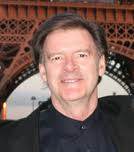
FAHS President Don Garden
Recent months have seen two sets of significant announcements in the FAHS.
First, we have had much pleasure in accepting the nominations of two new Fellows and two new recipients of an Award of Merit.
Mr Bruce Baskerville, a resident of Norfolk Island, was nominated as a Fellow by the RAHS for his contribution to history and heritage, both professionally and through voluntary community organisations, in Western Australia and New South Wales.
Professor Reg Appleyard is former Professor of Economic History at the University of Western Australia with many academic honours. He was nominated as a Fellow by the Royal Western Australian Historical Society for his many years of service to History at the state and regional level, and his large body of research and writing which has focussed substantially on migration studies.
Don Gibb, former FAHS Committee member and RHSV Councillor, was nominated for a Merit Award by the RHSV for his contribution to the community history movement at the national and state level, and his contribution to History education
Alan Foskett was nominated by the CDHS for a Merit Award for his contribution to the history movement in the ACT, to the preservation of nationally important heritage sites in the ACT, and for his publications on topics across ACT and NSW.
The FAHS Committee took much pleasure in accepting these nominations at its AGM in Albany in September. We congratulate all of them and thank them for their contribution to History and the community history movement in Australia.
Sadly, in recent weeks the Committee has accepted the resignations of three of its long-standing members.
Lennie McCall from RWAHS has been a stalwart of the FAHS and gave immense service to the Federation over the last decade, including six years as Honorary Secretary.
Yvonne Forrest ably represented the HSNT as a member of the Committee from 2002 to 2010, assisting the FAHS in many ways including the excellent organisation of an Annual General Meeting in Alice Springs.
Joan Hunt was an RHSV delegate for about five years and brought valuable expertise from her many years of service to regional societies in Victoria. She is moving to Britain for a couple of years - lucky her!
We thank all of them and wish them well for their futures.
The only confirmed replacement so far is Bob Nicholson, AO, former President of the RWAHS and a retired judge. We look forward to working with him.
Don Garden
December 2010
FAHS ANNUAL GENERAL MEETING, ALBANY, WA, 10 SEP 2010

The Annual General Meeting of Executive and Delegates was held at the headquarters of the Albany Historical Society, 37 Duke Street, Albany WA. Those in attendance were Associate Professor Don Garden (Royal Historical Society of Victoria {RHSV} and President), Ms Margaret Anderson (History Trust of South Australia {HTSA}); Emeritus Professor David Carment (Royal Australian Historical Society {RAHS} and Snr Vice President); Ms Esther Davies (Canberra and District Historical Society {CDHS} and Jnr Vice President); Mr Nick Drew (Royal Western Australian Historical Society {RWAHS} and Hon Treasurer); Ms Yvonne Forrest (Historical Society of the Northern Territory {HSNT}) ; Dr Helen Henderson (Royal Western Australian Historical Society {RWAHS} and Immediate Past President); Ms Joan Hunt (RHSV); Professor Ian Jack (RAHS), Dr Ruth Kerr (Royal Historical Society of Queensland {RHSQ} and Hon Secretary); Ms Lennie McCall (RWAHS); and Executive Officer: Mr John Davies. Apologies were received from Dr Andrew Lemon (RHSV), Mrs Judy Rechner (RHSQ), Ms Julia Ryan (C DHS) and Dr Dianne Snowden (Tasmanian Historical Research Association {THRA})
Annual Reports were presented by the President and the Hon. Treasurer (the President’s Report is reproduced below). The biennial election of office-bearers was held, with no change to the previous office-bearers. Decisions were made to award two Fellowships and two Merit Awards. The Organisational Review of the FAHS was considered, with particular focus on advocacy and representation at the national level, the need to fully utilise our communications channels, the need to work more closely with other national organisations, funding opportunities and the format of the AGM.
The AGM was followed by a general meeting which included a quarterly report from the President and the presentation and discussion of reports from each member organisation, and discussion of a variety of other ongoing issues.
NEXT AGM: Margaret Anderson (HTSA) spoke to this and offered the possibility of South Australia. The State History Conference of South Australia will be held on the first weekend of August 2011. The Australian Council of Professional Historians Association conference will also be held on 5-7 August 2011 in Adelaide. Our meeting considered that the FAHS AGM could be held on the Thursday. Several delegates supported this enthusiastically. 2011 is the 175th anniversary of South Australia and also the centenary of South Australia’s relinquishment of the Northern Territory to the Commonwealth. The meeting resolved to accept the offer of South Australia for the 2011 AGM.
ANNUAL REPORT OF THE PRESIDENT, 2009-2010
The last year has been a busy and generally successful one for the FAHS, although perhaps more one of stabilisation than advancement except in the area of having our voice heard.
I shall outline the activities under two headings.
1. Lobbying, promotion, representation and cooperation.
My main activity as President has been working in various ways with other individuals and groups for the broad furtherance of history and heritage, and the more specific aspects in which historical and heritage societies are involved.
I continued as a member of Minister Garrett’s Heritage Working Group, but it has met less frequently in recent months while also beginning to widen the range of heritage issues on which it has advised the Minister. The federal election brought a delay to further meetings and at the time of writing this report we are waiting to see who the Minister will be and what role the committee will be asked to play.
During the year I represented the FAHS in a variety of forums and discussions, including: I met with Minister Garrett; I had a meeting with Prof. Carmen Lawrence, the new Chair of the Heritage Council; I had several meetings with the representatives of the Australian Council of National Trusts to discuss cooperative action; I visited Canberra to meet officials in the Department of Water, Environment, Heritage & the Arts; I represented the FAHS on the committee of Blue Shield Australia, of which we became associate members; prior to the election I outlined to Greg Hunt, the Opposition Shadow Minister a proposal for $1 million to be devoted to small grants for historical societies – this was incorporated into the Opposition’s heritage policy.
Represented by David Carment, Dianne Snowden, Ruth Kerr and others, the FAHS became involved in the movement to prevent the closure of National Archives offices in Hobart, Adelaide and Darwin – and were delighted when that proposal was withdrawn while alternate arrangements were sought.
I have not been in a position to visit as many member societies this year, but have been to the RAHS twice (to present Fellowships to Dr Bruce Pennay and Professor Jill Roe), the CDHS and attended the South Australian Historical Societies Conference.
2. Communications
The website has continued to provide a very successful face to the world for the FAHS, and a source of information and advice for historical societies, including the updating by Judy Rechner of the FAHS guide to heritage identification and protection.
Thanks to Ruth Kerr and Esther Davies, the e-Bulletin and Newsletter have been very successful in communicating with historical societies across the nation, although we still experience difficulties in having our publications passed on to all societies and members. We continue to encourage all societies to join the Australian Historical Societies Support Group.
The future
Looking to the future, the FAHS faces a number of challenges. While we have continued to benefit from the larger GVEHO grant which we were awarded in 2008, our income still falls well short of what is needed to function fully as the peak national body for 1000 societies and their 100,000 members. In particular, we are very restricted in the hours for which we can employ our Executive Officer, we have insufficient funds to commission authors to prepare further training manuals and advice guides for the website, and the limited amount available for travel inhibits the capacity of the Executive to represent the FAHS as much as is required.
Acknowledgments
What the FAHS has achieved has very much been a combined effort by Committee members and the Executive Officer. As Executive Officer, John Davies has given careful administration and great support. His record keeping is immaculate and he is able to provide insight and services in a wide range of areas. My thanks to all members of the Committee for their time and efforts over the past year, but particularly I wish to acknowledge Ruth Kerr, David Carment, Esther Davies, Nick Drew and Helen Henderson who have been very effective and supportive members of the ‘Executive’.
Don Garden
September 2010
FEATURED STATE - WESTERN AUSTRALIA
This edition of the Newsletter has, as its focus, the state of Western Australia, the WA Affiliated Societies State History Conference (held at Albany on the two days following the FAHS AGM) and some of sterling work being done in historical societies there.
WA Affiliated Societies State History Conference, Albany, 11-12 Sep 2010
The following is a condensed and edited amalgamation of several articles which appeared in the October 2010 issue of “History West” (the monthly newsletter of the RWAHS)
Nearly two centuries after Major Edmund Lockyer and his men proclaimed what would first be known as Frederickstown for the British Crown, people from all over WA gathered to register for the 2010 State history conference. Members of more than 30 affiliated societies attended, as well as delegates to the FAHS, who had met in Albany on the previous day.
Albany’s Friday evening welcome was held upstairs in the Eclipse Building next to the WA Residency Museum. During brief speeches by Colin Aspinall, President of the Albany Historical Society, the CEO, Andrew Eyden, and Patron, Matt Benson MLC, there was time to enjoy food and drink as well as reflect on the historic location. To reach this first floor delegates walked past a light that for decades had guided ships’ crews. This collection of nearly 500 glass lenses was once housed on Eclipse Island, 6km south of The Gap, one of the area’s most visited coastal gems.
In the eyes of many, however, it was “eclipsed” – as a visual delight – by a living heritage treasure. This was the Kinjarling Yallors dance troupe. Six boys gave three short performances (spirit-cleansing dance, imitation of emus strolling and kangaroos feeding), accompanied by their leader, Ryan Humphries, on didgeridoo.
Saturday’s conference had an excellent historic setting: the Wesley Uniting Church in Duke Street. Built as the Methodist Church in 1890, it stands next to the original church built in 1863 and now Albert Hall, an excellent venue for conferees to take lunch, morning tea and afternoon tea.
The Conference agenda on Saturday morning covered formal reports from RWAHS and a farewell address from retiring President, Bob Nicholson. He also presented the Conference Shield to Albany and the annual Affiliated Societies Merit Award to Andrew Bowman, representing Carnamah Historical Society. Afternoon business included a panel discussion on Albany’s history, development and future, chaired by professional local historian Malcolm Traill. Panellists were Noongar elder Lynette Knapp, who spoke of traditional cultural aspects ranging from fishtraps to Aboriginal language wording, Professor Don Garden, author of acclaimed history of Albany and one of Australia’s most energetic promoters of local history; maritime archaeologist Adam Wolfe, and Julia Mitchell, the town’s New-Zealand-born adult services librarian. Also in the afternoon’s program was an interesting presentation by Matt Wrigley on the promotion of not-for-profit organisations on the Internet, using the Walpole-Nornalup District Historical Society as an example. Other speakers at the Conference were Andrew Eyden, CEO of the Albany Historical Society and Andrew Bowman of the Carnamah Historical Society, (see separate articles below). A well-attended Conference Dinner was held on the Saturday night.
On Sunday morning, delegates visited the three museums run by the Albany Historical Society, starting with The Co-op in Frederick Street. Built in 1870 as a store for staff of P and O (Peninsular and Oriental Steam Navigation Company), today it houses the Albany Historical Society’s museum and overflow from its other historic properties. The two-storey building has several smaller rooms, each dedicated to a facet of life in Albany’s past. The wonderful exhibits include emu feathers worn by soldiers of the Light Horse in World War One and an array of costumes. Down the hill is the Old Gaol (1852) with its cells and convict memorabilia. Despite the driving rain, some determined individuals also clambered over the nearby replica of the Brig Amity before heading back to the Society headquarters to look through the Patrick Taylor Cottage museum and to cram under the available shelter to enjoy the barbeque staged by Andrew Eyden and his team of volunteers.
The Conference ended with a very loud bang on Sunday afternoon when 40 of the remaining participants made their way to the Old Fort on Mt Clarence for the firing of a nine-pound cannon.
The next WA Affiliated Societies State Conference will be held in York in 2011.
For delegates to the Annual General Meeting in Albany, the work of Albany Historical Society and its CEO, Andrew Eyden, was particularly impressive. Following his address to the Western Australian History Conference, held at Albany on 11September, Andrew was asked to prepare an article for this Newsletter. I am sure that many historical society members around Australia will find his article most inspiring.
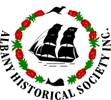
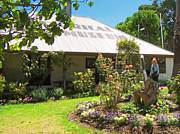
Patrick Taylor Cottage Museum, Albany
Formed in 1962, the fundamental aims of the Albany Historical Society are to preserve and protect Albany’s history and heritage, to foster interest in and enjoyment of Albany’s history within the community and to promote scholarly research, and publication about all aspects of Albany’s history. The Society acts as an advocate in the conservation and promotion of Albany’s cultural heritage while its resources complement State collections.
We currently have some 80 volunteers working across six venues throughout Albany. Our current membership stands at 186 and continues to grow. The Albany Historical Society is, in many ways, two separate businesses. One undertakes the functions of what one might consider 'normal' for an historical society and the other is very much a tourism-based business. The running of our museums sees us welcoming in excess of 55,000 visitors per year through our venues - the Albany Convict Gaol (1852), Patrick Taylor Cottage (the oldest house in Western Australia) (1832), the Replica of the Brig Amity and the Albany Co-operative Store.
The day-to-day operation of these venues is totally reliant on our pool of some 80 volunteers who contribute in excess of 27,000 voluntary hours per year. These people come from many different walks of life and are truly the backbone of the organisation. The Society is administered on a daily basis by me and my staff, aided by a monthly meeting of our Committee, which encompasses the heads of various departments within the organisation, i.e. Archives, Curatorial, Research, Internet and Technology, Media Relations, Photography, Finance and Maintenance. We have regular visits to each of our venues from schools (both primary and secondary), local and interstate organisations, and groups visiting Albany from inter and intrastate. During the cruising season, we also have a large number of passengers from the liners visiting Albany. On the memorable day the QEII visited Albany on her last voyage, all volunteer hands were on deck as we were inundated by over 300 passengers brought to our venues by buses.
2009 saw the Society undertake its biggest project to date. In June 2009 the Albany Historical Society announced, that it had secured funding from the Department of the Environment, Heritage and the Arts (Federal Government) for the amount of $121,000.00 under the Department of the Environment Jobs Fund Grants Round. This Grant was made possible with the help and support of Professor Donald Garden, FFAHS, FRHSV, President of the Federation of Australian Historical Societies and Lennie McCall AM, Chairman of Council of the Royal Western Australian Historical Society. The Albany Historical Society had a long-held ambition to beautify and enhance the area surrounding Patrick Taylor Cottage (the oldest dwelling in Western Australia (1832)). This funding enabled the Society to see this ambition come to fruition. The objective of the Society was to design and install a recreational botanical park (being the only one of its type in Albany) adjacent to Patrick Taylor Cottage and the Albany Historical Society’s Administration Offices in Duke Street, Albany, and to further enhance the English country garden that currently existed at Patrick Taylor Cottage. We have seen a 500% increase in revenue from entries since the completion of the Duke Street Park and Gardens, to such an extent that on percentage, Patrick Taylor Cottage makes more money than the Brig Amity and the Albany Convict Gaol combined!
This year, we have completed the interior work at the Co-operative Store Museum (our storage/display facility). This project has seen over 17,000 man-hours going into the rejuvenation of this building and some $15,000 from the Society. Our Display Technician, Annette Howard, along with the participants for the Work for the Dole Programme has now begun the mammoth undertaking of revamping the outside of the building.
In September 2010, the Albany Historical Society had the honour of hosting the Royal Western Australian Historical Society’s Annual State Conference along with the Federation of Australian Historical Societies Annual General Meeting. This saw us welcoming delegates and observers from not only Western Australia but also gave us the opportunity to meet the national bodies’ elected representatives. This event was the largest Conference in the event’s 48 year history, with over 176 people attending the two day Conference. It also gave me and many others the opportunity to meet Professor Donald Garden (of infamous fame) in Albany, being the author of the most holistic account ever written of Albany’s history, ‘Albany: A Panorama of the Sound, 1826’. Don amused us with his stories of the time he spent researching the book, spending many nights alone in the cell block at the Albany Convict Gaol, which at that time, held our archives. It was wonderful to have the opportunity to meet the Federation delegates and I hope that planning their Annual General Meeting to coincide with State Conferences, will be something they will consider continuing into the future.
Andrew Eyden
Chief Executive Officer, Albany Historical Society
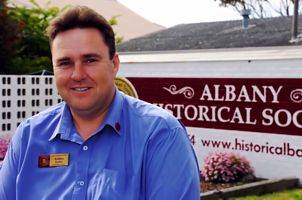
Another dynamic, but very different society is the Carnamah Historical Society of WA. Carnamah Townsite is 307km north of Perth along the Midlands "Painted" Road. With a population of approximately 400, the town services the local and regional farming areas with varied businesses from a John Deere dealership to supermarkets, post office, accountant, and trade workshops such as mechanics, electricians and metal fabrication. However, with 26 year old Andrew Bowman of the Carnamah Historical Society, it is clear that heritage and history in Carnamah are in safe hands. As well as receiving formal acknowledgement of his community contributions, through the annual Affiliated Societies Merit Award, he won applause at the Albany State Conference, for his achievement in running a website. (www.carnamah.com.au) which has databases of past residents for the Three Springs, Carnamah and Coorow districts. In 2004, Andrew received the Australia Day Young Citizen of the Year Award for the shire.

A Galaxy of Past Presidents of the Royal Western Australian Historical Society
Added lustre was given to a recent function of this society by the attendance of six of its Past-Presidents. The occasion was a pleasant cocktail party held at Stirling House to mark the State’s Foundation Day. The proceedings included brief speech making, songs of a local flavour rendered by a singer and her guitar, and the cutting of a festive cake with a ceremonial sword. The former Presidents each held office for three years, thus giving eighteen years of sterling service to the Society.
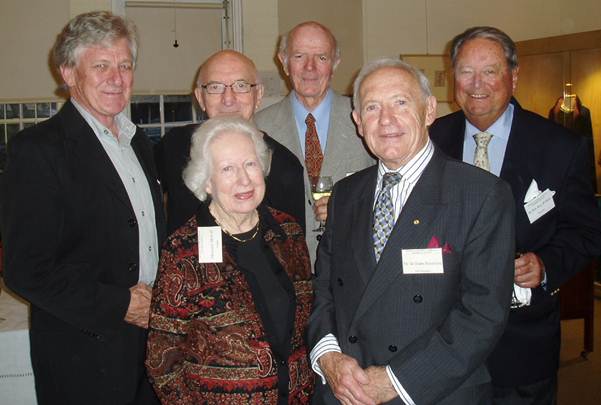
At rear: Clem Mulcahy, Ron Bodycoat, Emeritus Professor Reg Appleyard, The Rt Hon Reg Withers.
In front: Margaret Medcalf, The Rt Hon Sir William Heseltine;
Editor’s added note: Since the above photograph was taken, the RWAHS has an additional Past-President. The three-year term of Hon. Robert Nicholson AO as President of the RWAHS recently concluded; he continues as a Member of Council of the RWAHS and is one of its delegates to the FAHS.
GOOD NEWS STORIES FROM HISTORICAL SOCIETIES
It is often said that good news is not news. However, it is always cheering to hear success stories from some of our many regional and local historical stories. Here are two such stories. If your local historical society has similar good news stories, be sure to let the Federation know.
ABC Best Regional Museum Award – Richmond River Historical Society
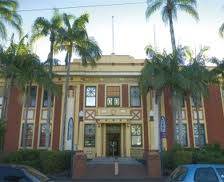
Richmond River Historical Museum, Lismore
Richmond River Historical Society, whose museum is in Lismore, NSW has been a double winner in the ABC Radio National Marvellous Museums competition, a competition of over 100 entries. The first award was the Regional Museum Award which focuses on museums as story-tellers and local ambassadors, and as planners for future survival. Richmond River Historical Society, formed in 1936, was selected as overall winner because it performed highly across all criteria. It is a very active museum with a big collection preserving all elements of the local history, has a strong volunteer base and works well with all locals including the Italian and Bandjalung communities to tell interesting and inclusive stories about the district. The Society also won in the Best Volunteer-run Category. The Richmond River Historical Society Inc. (RRHS), founded on 1 April 1936, was one of the first three historical societies formed in New South Wales outside the Sydney region. After going into recess during World War II, it was reconstituted in 1953.
Cohuna and District Historical Society, Victoria
A letter of appreciation
I have recently spent six weeks in the Cohuna district conducting research entailing an investigation of the social and farming history of the area. A criterion of site selection was a well documented social history. Before beginning work in the area I couldn’t have imagined a place with more detailed and well-organised information and accommodating volunteers than at the Cohuna and District Historical Society.
The Society enlists the help of around 70 volunteers, each having a specific role. The volunteers share a wealth of knowledge of both the historical and current activities in the area. The archives are meticulously organised with catalogue listings both alphabetically and by subject matter ensuring that the information is effortlessly located. There appears to be a detailed history of just about everything including sporting clubs, families, local government, wars, agriculture and personal diaries. There is a large photographic collection being continually updated and different displays arranged for various events. A regular feature called ‘As time goes by’ is submitted weekly by the Society to the Cohuna Farmers’ Weekly with a different theme each month.
The Society and its volunteers are well regarded in the town and members of the community, recognising the value of the society, are constantly bringing in additional material and photographs to be added to the collection as well as goods for the Trash and Treasure - one of the major fund raisers for the Society. I can’t speak highly enough of the Society and the way in which I was welcomed and assisted throughout my time there.
Tamara Sysak
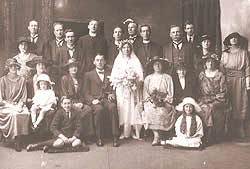
Wee Wee Rup/Gunbower Wedding c.1902
An image from the Cohuna and District Historical Society collection
REVIEW OF PROTECTION OF MOVABLE CULTURAL HERITAGE ACT - 1986 – SUMMARY OF REPORT
The following summary was prepared by Dr. Helen Henderson (Immediate Past President of the FAHS)
In March 2009 the Federation made a submission to the Review of the operation of the Australian Government’s Protection of Movable Cultural Heritage Act 1986 (PMCH Act) and the Protection of Movable Cultural Heritage Regulations 1987 (PMCH Regulations) undertaken by the Department of Environment, Water, Heritage and the Arts. The report on this review has been published. The outcome from public consultation was 74 recommendations. These are divided into short, medium and long-term recommendations.
The PMCH Act gives effect to the United Nations Educational, Scientific and Cultural Organisation (UNESCO) Convention on the Means of Prohibiting and Preventing the Illicit Import, Export and Transfer of Ownership of Cultural Property 1970 (the 1970 UNESCO Convention), which Australia ratified on 30 October 1989 and it entered into force in Australia on 30 January 1990.
The reviewers found that overall there is strong support for the aims of the PMCH legislation and for using an export Control List with a broad range of categories, rather than a national register, to protect culturally significant objects. However, many submissions also indicated that a lack of consistency in the application of significance criteria across the Control List categories, together with a lack of clear guidance on how to determine significance, has resulted in confusion and uncertainty for applicants, expert examiners, and law enforcement and Australian Customs and Border Protection Service (ACBPS) officers. This uncertainty causes difficulties in administering and enforcing the PMCH legislation. The question of the treatment of significant Aboriginal and Torres Strait Islander objects (Indigenous objects) under the PMCH legislation elicited the greatest range of views.
It is pleasing to note that the recommendations in the report addressed most of the concerns raised by the Federation.
A summary of the major recommendations follows (short, medium and long-term recommendations have not been distinguished):
The National Cultural Heritage Control List categories to be reviewed every five years; comparative data on applications for export permits to be gathered, all current Control List categories to remain as separate items. Targeted consultation with relevant stakeholders to be undertaken to examine the effectiveness of the current Control List and the adequacy of Class A and Class B categories of objects, monetary and age thresholds for certain categories.
A reference list of special significance assessment guidelines to be developed and made available publicly.
A list of examples, to be accompanied by significance statements of nationally significant objects, including objects which have been denied export permits and objects which have been purchased using the Australian Government’s National Cultural Heritage Account (NCH Account) to be compiled and made available publicly to guide expert examiners and export applicants. The Guidelines for Expert Examiners to require them to use the list as a guide in undertaking significance assessments.
The PMCH legislation should require owners of all Australian protected objects denied export permits to register their contact details and the location of their object with the Department. The prohibition of destruction or damage of an Australian protected object prohibited from export by its owner under the Act to be investigated.
There are a series of recommendations relating to streaming export permit applications, including the decision-making process, the introduction of a requirement for more rigorous documentation involving undertaking provenance and significance research, the introduction of an application for permit fee, the issuing of temporary export permits for certain objects that are intended to be returned to Australia, the development of criteria for extending general permits to non-institutional applicants.
Five-year tenure for registered expert examiners and a five yearly review of the register of expert examiners to be instituted. Expert examiners to be routinely provided with feedback by the department on the outcome of their recommendations. A training program for registered expert examiners to be implemented.
Relevant stakeholders to be consulted on the composition and functions of the National Cultural Heritage Committee.
There are a number of recommendations relating to the operation of the NCH Account. These relate to the provision of emergency or ex-gratia funding, the identification of potential links between the Cultural Gifts Program and the PMCH legislation, the amendment of the regulations and guidelines for the NCH Account to correctly reflect its operations and to support decision-makers and individual applicants; the better promotion of the NCH Account to communities; and increasing Australian Government funding to the NCH Account.
A communications strategy including targeted public awareness and education campaigns to be developed to address the Australian community’s lack of knowledge about the PMCH legislation and targeted training packages to be developed to assist key stakeholders such as expert examiners and Australian Customs and Border Protection Service officers.
There are number of recommendations to strengthen compliance and enforcement provisions, including aligning the PMCH Act compliance and enforcement provisions with the Environment Protection and Biodiversity Conservation Act 1999.
There are a number of recommendations relating to international obligations and collaboration with the object of enhancing the Australian Government’s capacity to seize illegally exported foreign objects; the implications for the PMCH legislation to be investigated should the Australian Government ratify the 2003 UNESCO Convention for the Safeguarding of the Intangible Cultural Heritage, the 2001 UNESCO Convention on the Protection of the Underwater Cultural Heritage, the UNIDROIT Convention (the International Institute for the Unification of Private Law Convention) and of becoming a party to the 1954 and 1999 Protocols to the 1954 Hague Convention for the Protection of Cultural Property in the Event of Armed Conflict.
The full report can be downloaded from the Department’s website at:
www.arts.gov.au/public_consultation/submissions-closed/pmch-review/pmch_review_report

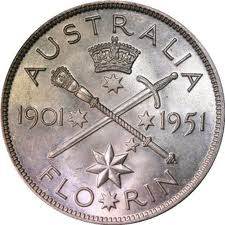
Examples of movable cultural heritage items of Australian significance.
NEED ADVOCACY SUPPORT? WHY NOT ASK THE FEDERATION?
In order to be an effective voice for historical societies throughout Australia, it is essential that the Federation knows what concerns/practical problems societies consider should be addressed at the federal/state/local levels. If your society wishes to enlist the support of the Federation on any issue please go to our website at www.history.org.au and complete a form for each concern/practical problem for which you are seeking advocacy support. The form can be electronically completed and emailed to admin@history.org.au. To find the form and further information click on ‘Support’ button on the horizontal bar on the home page and on the drop-down menu click on ‘Advocacy support’.”



